- Home
- John Grisham
The Racketeer Page 6
The Racketeer Read online
Page 6
case is solved and we can go home. If the guy is conning us, what’s the big deal?”
At that moment, no one around the table could envision a big deal.
“Who will object to it?” McTavey asked.
“The U.S. Attorney’s Office is not on board,” Westlake said.
“No surprise there,” McTavey said. “I’m meeting with the Attorney General tomorrow afternoon. I can neutralize the U.S. Attorney. Any other problems?”
Hanski cleared his throat again. “Well, sir, Mr. Bannister insists he will not give us the name until a federal judge signs an order of commutation. I’m not sure how this will work, but the commuting of his sentence will become automatic when the grand jury indicts our mystery guy.”
McTavey brushed him off. “We got lawyers to handle all that. Does Bannister have one?”
“Not that I know of.”
“Does he need one?”
“I’ll be happy to ask him,” Hanski said.
“Let’s get this deal done, okay?” McTavey said impatiently. “There’s a big upside and a small downside. Based on our progress so far, we’re due for a break.”
CHAPTER 10
A month has passed since the murders of Judge Fawcett and Naomi Clary. Newspaper reports of the investigation have become shorter and less frequent. The FBI had no comment in the beginning, and after a month of frantic work with nothing to show for it, the task force seems to have vanished now. In the past month, an earthquake in Bolivia, a school-yard shooting in Kansas, the overdose of one rap star and the detoxification of another have all conspired to divert our attention to more important matters.
This is all good news for me. The investigation may appear quiet on the surface, but internally the pressure grows. My worst nightmare is a bold headline announcing the arrest of someone, but that appears less and less likely. The days pass, and I wait patiently.
I see clients by appointment only. I meet them at my cubicle in the library. They haul in their legal papers, a stack of assorted pleadings, orders, motions, and rulings that as inmates we have the right to keep in our cells. The COs cannot touch our legal papers.
For most of my clients, two appointments will suffice to convince them that there is nothing to be done with their cases. During the first appointment, we review the basics, and I go through their papers. Then I’ll spend a few hours doing research. During the second appointment, I usually deliver the bad news that they’re out of luck. There’s no loophole to save them.
In five years, I have helped six inmates gain early release from prison. Needless to say, this adds mightily to my reputation as a masterful jailhouse lawyer, but I caution every new client that the odds are stacked heavily against him.
This is what I explain to young Otis Carter, a twenty-three-year-old father of two who’ll spend the next fourteen months here at Frostburg for a crime that should not have been a crime. Otis is a country boy, a Baptist with a deep faith, a happily married electrician who still cannot believe he’s in a federal prison. He and his grandfather were indicted and charged with violating the Civil War Battlefield and Artifact Preservation Act of 1979 (as amended in 1983, 1989, 1997, 2002, 2008, and 2010). His grandfather, aged seventy-four and suffering from emphysema, is in a Federal Medical Center in Tennessee, also serving fourteen months. Because of his medical condition, he will cost the taxpayers about $25,000 a month.
The Carters were hunting for artifacts on their two-hundred-acre farm adjacent to the New Market Battlefield State Historical Park, in the Shenandoah Valley, less than an hour from my hometown of Winchester. The farm has been in the family for over a hundred years, and from the time he could walk, Otis accompanied his grandfather as he “went digging” for Civil War relics and souvenirs. Over the decades, his family assembled an impressive collection of minie balls, cannonballs, canteens, brass buttons, pieces of uniforms, a couple of battle flags, and several dozen guns of all varieties. This they had done legally. It is illegal to remove artifacts and relics from a National Historic Landmark, which is federal land, and the Carters were well aware of this law. Their private little museum, in a converted hay barn, was stocked with items they had found on their own property.
However, in 2010, the Civil War Battlefield and Artifact Preservation Act was amended again. In response to efforts by preservationists to restrict development near battlefields, some last-minute language was added to a one-hundred-page amendment. It became illegal to dig for relics “within two miles” of the borders of a National Historic Landmark, regardless of whose land one happened to be digging on. The Carters were not informed of the new rules; indeed, the language was buried so deep in the amendment virtually no one knew about it.
Over the years, the federal agents had harassed Otis’s grandfather and accused him of digging on protected land. They periodically stopped by his home and demanded to see his museum. When the law changed, they waited patiently until they caught Otis and his grandfather scouring a wooded area of Carter property with metal detectors. The Carters hired a lawyer who advised them to plead guilty. Criminal intent is no longer required for many federal crimes. Lack of knowledge is no defense.
As the victim of the Racketeer Influenced and Corrupt Organizations Act (RICO), an often misguided and famously flexible federal law, I am keenly interested in the proliferation of the federal criminal code, now at twenty-seven thousand pages and counting. The Constitution names only three federal offenses: treason, piracy, and counterfeiting. Today there are over forty-five hundred federal crimes, and the number continues to grow as Congress gets tougher on crime and federal prosecutors become more creative in finding ways to apply all their new laws.
Otis could possibly attack the constitutionality of the amended law. This would take several years of litigation and would drag on long after he’s paroled and back home with his family. As I explain this to him during our second meeting, he seems to lose interest. If he can’t get out right now, why bother? But the case intrigues me. We decide to discuss it later.
If my grand scheme falls flat, I might take Otis’s case and fight all the way to the Supreme Court. That will keep me busy for the next five years.
The Supreme Court has twice refused to consider my case. Though we couldn’t prove it, there was a strong feeling that my appeals were hurried through the system because of the government’s enthusiasm in putting away Barry Rafko and his confederates, me included.
I was convicted in November 2005 and sentenced two months later to ten years. At my sentencing I was “remanded,” which meant I was taken into custody. A few lucky federal felons are allowed to “self-surrender,” or remain free until ordered to report to a facility. They have time to prepare, but most are not given this luxury.
My lawyer thought I would get five or six years. Barry the Backhander, the star defendant, the target, the colorful villain everyone enjoyed hating, got twelve years. Surely I deserved less than half the time of that slimeball. Dionne, my beautiful and loving and fiercely supportive wife, was in the courtroom, sitting bravely next to my humiliated father. I was the only one of the eight sentenced that day, and as I stood before Judge Slater, with my lawyer to my right, I had trouble breathing. This cannot be happening, I said to myself, over and over, as I took in the blurred images around me. I don’t deserve this. I can explain. I am not guilty. Slater scolded and preached and played for the press, and I felt like a battered heavyweight in the fifteenth round, sagging on the ropes, covering my face, waiting for the next shot to the face. My knees were putty. I was sweating.
When Judge Slater said “ten years,” I heard a gasp behind me as Dionne collapsed in tears. As they led me away, I glanced back for the last time. I’ve seen this a hundred times in movies, TV shows, and in real-life court reporting-the last, frantic farewell look of the condemned. What do you think about as you’re leaving the courtroom and you’re not going home? The truth is that nothing is clear. There are too many random thoughts, too much fear, anger, and raw emotion to understan
d what is happening.
Dionne had both hands over her mouth, in shock, crying, tears everywhere. My father had his arm around her, trying to console her. That was the last thing I saw-my beautiful wife distraught and destroyed.
Now she’s married to someone else.
Thanks to the federal government.
My jurors came from the District. A few appeared bright and educated, but most were not, shall I say, sophisticated. After three days of deliberations, they announced to the judge that they were making little progress. And who could blame them? By unloading a sizable chunk of the federal code, the prosecutors had adopted the timeworn strategy of throwing as much mud as possible against the wall and hoping something would stick. This overkill had turned what should have been a relatively easy case against Barry Rafko and the congressman into a legal quagmire. I had spent countless hours working on my own defense, and I couldn’t understand all of the prosecution’s theories. From the beginning, my lawyer had predicted a hung jury.
After four days of deliberations, Judge Slater delivered what is commonly referred to in trial circles as the “dynamite charge.” This is basically a demand that the jurors get back there and reach a verdict, at all costs. You’re not going home until we have a verdict! Such a charge rarely works, but I wasn’t so lucky. An hour later, the exhausted and emotionally spent jurors returned with unanimous verdicts against all defendants, on all counts. It was obvious to me and many others that they did not understand most of the code sections and intricate theories used by the prosecution. One of the jurors was later quoted as saying, “We just assumed they were guilty, or else they wouldn’t have been charged in the first place.” I used this quote in my appeals, but it apparently went unheard.
I watched the jurors carefully throughout the trial, and they were overwhelmed from the opening statements. And why shouldn’t they have been? Nine different lawyers gave their versions of what had happened. The courtroom had to be redesigned and renovated to make room for all of the defendants and all their lawyers.
The trial was a spectacle, a farce, a ridiculous way to search for the truth. But as I learned, the truth was not important. Perhaps in another era, a trial was an exercise in the presentation of facts, the search for truth, and the finding of justice. Now a trial is a contest in which one side will win and the other side will lose. Each side expects the other to bend the rules or to cheat, so neither side plays fair. The truth is lost in the melee.
Two months later I returned to the courtroom for the sentencing. My lawyer had requested that I be allowed to self-surrender, but Judge Slater was not impressed with our request. After he gave me ten years, he ordered me into remanded custody.
It is indeed remarkable that more federal judges are not shot. For weeks afterward, I conceived all manner of schemes to inflict a slow, torturous death upon Slater.
I was taken to the courtroom by the U.S. Marshals and led to a holding cell in the courthouse, then to the D.C. jail, where I was stripped, searched, given an orange jumpsuit, and placed in a crowded cell with six other inmates. There were only four cots. The first night I sat on the concrete floor, just me and my thin blanket with holes in it. The jail was a noisy zoo, overcrowded and understaffed, and sleep was impossible. I was too frightened and too stunned to close my eyes, so I sat in a corner and listened to the yells and screams and threats until dawn. I stayed there a week, eating little, sleeping little, urinating in a filthy open toilet that didn’t flush and was within ten feet of my cell mates. At one time, there were ten of us in the cell. I never showered. A bowel movement required an urgent plea to visit the “shit room” down the hall.
The transporting of federal prisoners is done by the U.S. Marshals, and it is a nightmare. Prisoners of all security levels are lumped together, with no regard for our crimes or the risks we might pose. Therefore, we were all treated like savage murderers. With every movement my hands were cuffed, my ankles chained, and I was attached to the inmate in front of me and the one behind. The mood is nasty. The marshals have one job-to move the inmates safely with no escapes. The inmates, many of them rookies like me, are frightened, frustrated, and bewildered.
Fourteen of us left D.C. on a bus, an unmarked rig that had hauled schoolchildren decades earlier, and headed south. The handcuffs and chains were not removed. A marshal with a shotgun sat in the front seat. After four hours, we stopped at a county jail in North Carolina. We were given a wet sandwich and allowed to urinate behind the bus, still chained and bound. The handcuffs and leg irons were never removed. After two hours of waiting, we left with three additional prisoners and headed west. For the next six days, we stopped at county jails in North Carolina, Tennessee, and Alabama, picking up prisoners, occasionally dropping one off, sleeping in a different cell each night.
The county jails were the worst: tiny cramped cells with no heat, air-conditioning, sunlight, or suitable sanitation; food that dogs would ignore; little water; Bubbas for guards; a much higher threat of violence; local inmates who resented the intrusion of “federal prisoners.” I could not believe conditions so deplorable existed in this country, but I was naive. As our journey continued and our moods soured, there was a marked increase in the level of bitching on the bus. This ceased when a veteran inmate explained the concept of “diesel therapy.” Complain or make trouble, and the marshals will keep you on the bus for weeks and give you a free tour of dozens of county jails.
There was no hurry. The marshals can transport prisoners during daylight hours only; thus the distances tend to be short. They had absolutely no interest in our comfort or privacy.
We eventually made it to a distribution center in Atlanta, a notoriously bad place where I was kept in solitary confinement for twenty-three hours a day while my paperwork inched across someone’s desk in Washington. After three weeks of this, I was losing my sanity. Nothing to read, no one to chat with, terrible food, bad guards. Eventually, we were re-shackled and loaded onto another bus and driven to the Atlanta airport where we boarded an unmarked cargo plane. Chained to a hard plastic bench and sitting knee to knee, we flew to Miami, though we had no idea where we were headed. One of the marshals kindly informed us. In Miami we picked up a few more, then flew to New Orleans, where we sat in suffocating humidity for an hour as the marshals loaded on even more.
On the plane, we were allowed to talk, and the chatter was refreshing. Most of us had just endured days of solitary, so we plunged into conversation. This was not the first trip for some of the boys, and they told other stories of being transported in chains, courtesy of the federal government. I began to hear descriptions of prison life.
At dark, we arrived in Oklahoma City, where we were shuffled onto a bus and taken to another distribution center. The place was not quite as bad as Atlanta, but by then I was thinking about suicide. After five days in solitary confinement, we were re-shackled and taken back to the airport. We flew into Texas, world capital of lethal injection, and I daydreamed of seeing the needle stuck into my arm and floating away. Eight tough guys, all Hispanic, boarded “Con Air” in Dallas, and we flew to Little Rock, then Memphis, then Cincinnati, where my flying days ended. I spent six nights in a tough city jail before a pair of marshals drove me to the prison in Louisville, Kentucky.
Louisville is five hundred miles from my hometown of Winchester, Virginia. Had I been allowed to self-surrender, my father and I would have made the drive in about eight hours. He would have dropped me off at the front gate and said good-bye.
Forty-four days, twenty-six of them in solitary, too many stops to remember. There is no logic in this system and no one cares. No one is watching.
The real tragedy of the federal criminal system is not the absurdities. It is the ruined and wasted lives. Congress demands long, harsh sentences, and for the violent thugs these are appropriate. Hardened criminals are locked away in “U.S. Pens,” fortresses where gangs are rampant and murders are routine. But the majority of federal prisoners are nonviolent, and many are convicted of crimes tha
t involved little, if any, criminal activity.
For the rest of my life I will be regarded as a criminal, and I refuse to accept this. I will have a life, freed from my past and far away from the tentacles of the federal government.
CHAPTER 11
Rule 35 of the Federal Rules of Criminal Procedure provides the only mechanism for the commutation of a prison sentence. Its logic is brilliant and fits my situation perfectly. If an inmate can solve another crime, one that the Feds have an interest in, then the inmate’s sentence can be reduced. Of course, this takes the cooperation of the investigating authorities-FBI, DEA, CIA, ATF, and so on-and of the court from which the inmate was sentenced.
If all goes as planned, I may soon have the privilege of seeing the Honorable Judge Slater, and it will be on my terms.
The Feds are back.
The warden is much nicer to me these days. He figures he has a prize that some big people desire, and he needs to be in the thick of things. I take a seat at his desk and he asks if I want coffee. This offer is almost too surreal to comprehend-the almighty warden offering coffee to an inmate.
“Sure,” I say. “Black.”
He punches a button and relays our wishes to a secretary. I notice he’s wearing cuff links today, a good sign.
“Got the big boys here today, Mal,” he informs me smugly, as if he’s coordinating all efforts to find the murderer. Since we are such good pals now, he’s using my first name. Until now it’s been Bannister this and Bannister that.
“Who?” I ask.
“The director of the task force, Victor Westlake, from Washington, and a bunch of lawyers. I’d say you have their attention.”
I cannot keep from smiling, but only for a second.
“This guy who killed Judge Fawcett, was he ever here, at Frostburg?” the warden asks.
“Sorry, Warden, I can’t answer that.”
“Either here or Louisville, I take it.”
“Maybe, or maybe I knew him before prison.”
He frowns and rubs his chin. “I see,” he mumbles.
The coffee arrives, on a tray, and for the first time in years I drink from a cup not made of plastic or paper. We kill a few minutes talking about nothing. At 11:05, his secretary informs him through the intercom on his desk, “They are in place.” I follow him through the door and into the same conference room.
Five men in the same dark suits, same white shirts with button-down collars, same bland ties. If I had seen them in a crowd from half a mile away, I could have said, “Yep, Feds.”
We go through the usual stiff introductions and the warden reluctantly excuses himself. I sit on one side of the table and my five new buddies sit on the other. Victor Westlake is in the middle, and to his right are Agent Hanski and a new face, Agent Sasswater. Neither of these two will say a word. To the left of Westlake are the two assistant U.S. Attorneys-Mangrum from the Southern District of Virginia and Craddock from the Northern. The rookie Dunleavy got left behind.
Thunderstorms had rolled through just after midnight, and Westlake begins by saying, “Quite a storm last night, huh?”
I narrow my eyes and stare at him. “Seriously? You want to talk about the weather?”
This really pisses him off, but he’s a pro. A smile, a grunt, then, “No, Mr. Bannister, I’m not here to talk about the weather. My boss thinks we should make a deal with you, so that’s why I’m here.”
“Great. And, yes, it was quite a storm.”
“We’d like to hear your terms.”
“I think you know them. We use Rule 35. We sign an agreement, all of us, in which I give you the name of the man who killed Judge Fawcett. You pick him up, investigate him, do your thing, and when a federal grand jury indicts him, I walk. That very day. I transfer out of Frostburg and disappear into witness protection. No more time; no more criminal record; no more Malcolm Bannister. The deal is confidential, locked away, buried, and signed by the Attorney General.”
“The AG?”
“Yes sir. I don’t trust you or anyone in this room. I don’t trust Judge Slater or any other federal judge, prosecutor, assistant prosecutor, FBI agent, or anybody else working for the federal government. The paperwork must be perfect; the deal unbreakable. When the killer is indicted, I walk. Period.”
“Will you use an attorney?”
“No sir. I can handle that.”
“Fair enough.”
Mangrum suddenly produces a file and removes several copies of a document. He slides one across the table, and it comes to a rest in front of me, in perfect position. I glance at it and my heart begins to pound. The heading is the same as all of the motions and orders filed in my case: “In the United States District Court of Washington, D.C.; United States of America versus Malcolm W. Bannister.” In the center of the page, in all caps, are the words “RULE 35 MOTION.”
“This is a proposed court order,” Mangrum says. “It’s just a starting point, but we’ve spent some time on it.”
Two days later, I am placed in the rear seat of a Ford SUV and driven away from Frostburg, my first exit from the camp since the day I arrived three years earlier. No leg chains today, but my wrists are cuffed in front of me. My two buddies are U.S. Marshals, names withheld, but they are nice enough. After we get through the weather, one of them asks if I’ve heard any good jokes. Lock away six hundred men and give them plenty of idle time, and the jokes come in waves.
“Clean or dirty?” I ask, though there are few clean jokes in prison.
“Oh, dirty of course,” the driver says.
I tell a couple and get some good laughs as the miles fly by. We’re on Interstate 68, zipping through Hagerstown, and the feeling of freedom is exhilarating. In spite of the handcuffs, I can almost taste the life out there. I watch the traffic and dream of owning and driving a car again, of going anywhere. I see fast-food restaurants at the interchanges and I salivate at the thought of a burger and fries. I see a couple walking hand in hand into a store, and I can almost feel the touch of her flesh. A beer sign in the window of a bar makes me thirsty. A billboard advertising Caribbean cruises takes me to another world. I feel as if I’ve been locked up for a century.
We turn south on Interstate 70 and are soon in the Washington-Baltimore sprawl. Three hours after we leave Frostburg, we arrive in the basement of the federal courthouse in downtown D.C. Inside the building, the handcuffs are removed; I proceed with one marshal in front of me, the other behind.
The meeting takes place in the chambers of Judge Slater, who’s as prickly as ever and seems to have aged twenty years in the past five. He considers me a

 Playing for Pizza
Playing for Pizza The King of Torts
The King of Torts Theodore Boone: Kid Lawyer
Theodore Boone: Kid Lawyer Skipping Christmas
Skipping Christmas Ford County
Ford County Partners
Partners The Last Juror
The Last Juror A Painted House
A Painted House A Time to Kill
A Time to Kill The Innocent Man
The Innocent Man Sycamore Row
Sycamore Row The Runaway Jury
The Runaway Jury The Racketeer
The Racketeer Rogue Lawyer
Rogue Lawyer The Appeal
The Appeal Camino Island
Camino Island Gray Mountain
Gray Mountain The Firm
The Firm The Testament
The Testament The Scandal
The Scandal The Brethren
The Brethren Calico Joe
Calico Joe The Associate
The Associate The Pelican Brief
The Pelican Brief The Abduction
The Abduction The Activist
The Activist The Street Lawyer
The Street Lawyer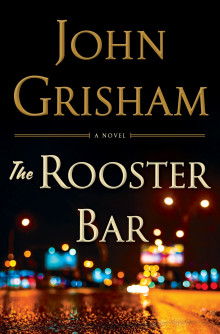 The Rooster Bar
The Rooster Bar The Summons
The Summons The Fugitive
The Fugitive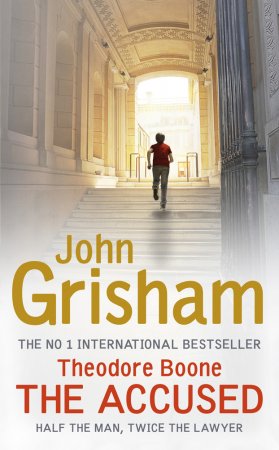 The Accused
The Accused The Broker
The Broker The Client
The Client The Litigators
The Litigators The Whistler
The Whistler The Rainmaker
The Rainmaker The Confession
The Confession The Partner
The Partner Witness to a Trial
Witness to a Trial Bleachers
Bleachers The Chamber
The Chamber A Time for Mercy
A Time for Mercy The Reckoning
The Reckoning![[Theodore Boone 02] - The Abduction Read online](http://i1.bookreadfree.com/i/03/23/theodore_boone_02_-_the_abduction_preview.jpg) [Theodore Boone 02] - The Abduction
[Theodore Boone 02] - The Abduction The Accused tb-3
The Accused tb-3 Theodore Boone: The Activist
Theodore Boone: The Activist Gray Mountain: A Novel
Gray Mountain: A Novel The Confession: A Novel
The Confession: A Novel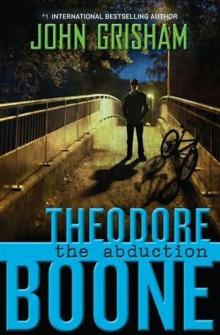 The abduction tb-2
The abduction tb-2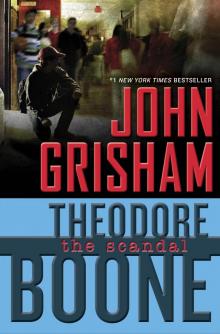 Theodore Boone: The Scandal
Theodore Boone: The Scandal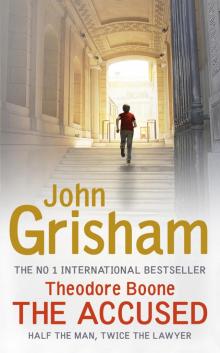 Theodore Boone: The Accused
Theodore Boone: The Accused The Activist tb-4
The Activist tb-4 Ford Country
Ford Country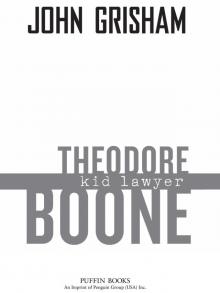 Kid Lawyer
Kid Lawyer Sycamore Row jb-2
Sycamore Row jb-2 Chamber
Chamber Three Classic Thrillers
Three Classic Thrillers